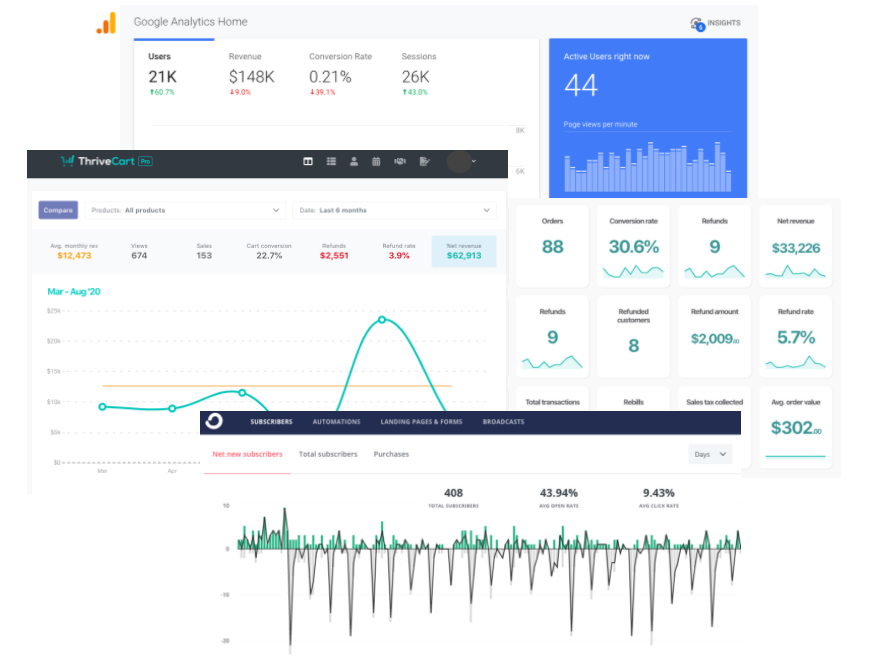Robin Sarma famously said: “What gets measured, gets improved.” Well, I’m more of a Dr. Joe Dispenza kind of gal. So, I like a different version of that saying: “Where you place your attention is where you place your energy.”
Regardless of what version you prefer, watching your key metrics, or KPIs (Key Performance Indicators), is critical if you want to grow your business efficiently and effortlessly.
I realize that this habit doesn’t come naturally to every business owner. Certainly not if you’re a visual thinker.
Many of our clients admit that focusing on data didn’t always come easy to them. Originally, they were more comfortable operating on intuition and gut feeling.
No, they didn’t ignore their numbers entirely. They kept track of their expenses. They knew the results of their launches. They made sure to regularly check their bank account balance.
However, they admit that looking back, not relying on their numbers when making decisions was like trying to grow their business blindfolded.
Sometimes, this lack of visibility made them feel that they needed to keep adding more and more onto their plate to satisfy this insatiable beast that their business had become. A business that constantly whispered in their ear: “Create more, publish more, post more, launch more, advertise more…”
Other times, they’d find themselves on the cross-roads not knowing what to do when seeing things they’d always done suddenly stop producing the same results.
The REAL challenge.
Truth be told, the real challenge is not your inability to build a habit to start watching and relying on your numbers. The actual challenge is getting the metrics that matter to tell you, at a glance, a story of what’s happening in your business.
If your business is anything like the businesses of our clients, the data you need is everywhere and nowhere—your business bank account, your payment processor, your email marketing software, your site analytics, your landing page tool, your social media profiles, your ad campaign manager…

On the plus side, every platform comes with a robust reporting capability. It allows you to track, slice and dice, and dig deeper and deeper into the data.
On the minus side, every one of those sets of numbers lives in their own silos with different metrics that matter in different ways. More often than not, those metrics are not even comparable.
So, what do you do?
Well, one thing I suggest you DON’T do is sign up for a dashboard software and get your numbers funneled into it. You’ll have your numbers all in one place, that’s for sure. But you’ll still be staring at a wall of numbers that don’t mean much. You’ll go from partial visibility to data overload.
What you DO do is decide:
ONE: What are the metrics that matter to me? The way you figure it out is by listing the questions you need to have answers to so that you can make decisions.
For example: “What’s our email open rate?” If I have that number, I’ll be able to see what email headlines work best and do more of what works. If you’re going to do that, great! If it’s not a priority, though, toss the question and don’t track the number. Seriously! Don’t track anything for tracking sake.
TWO: What’s the most appropriate solution for me right now to track those numbers? It might be:
- A spreadsheet that your team member regularly updates for you. Will it be perfect? Not at all. Error-prone? For sure. Incomplete? Most likely. But it will give you enough visibility into the only metrics that truly matter at the moment.
- A robust dashboard that pulls the numbers for you automatically and in real-time. A dashboard designed to answer your biggest questions and drive action. A dashboard that doesn’t grade your marketing efforts, but rather guides them.
I hope this gives you direction for what to do with your numbers next.


